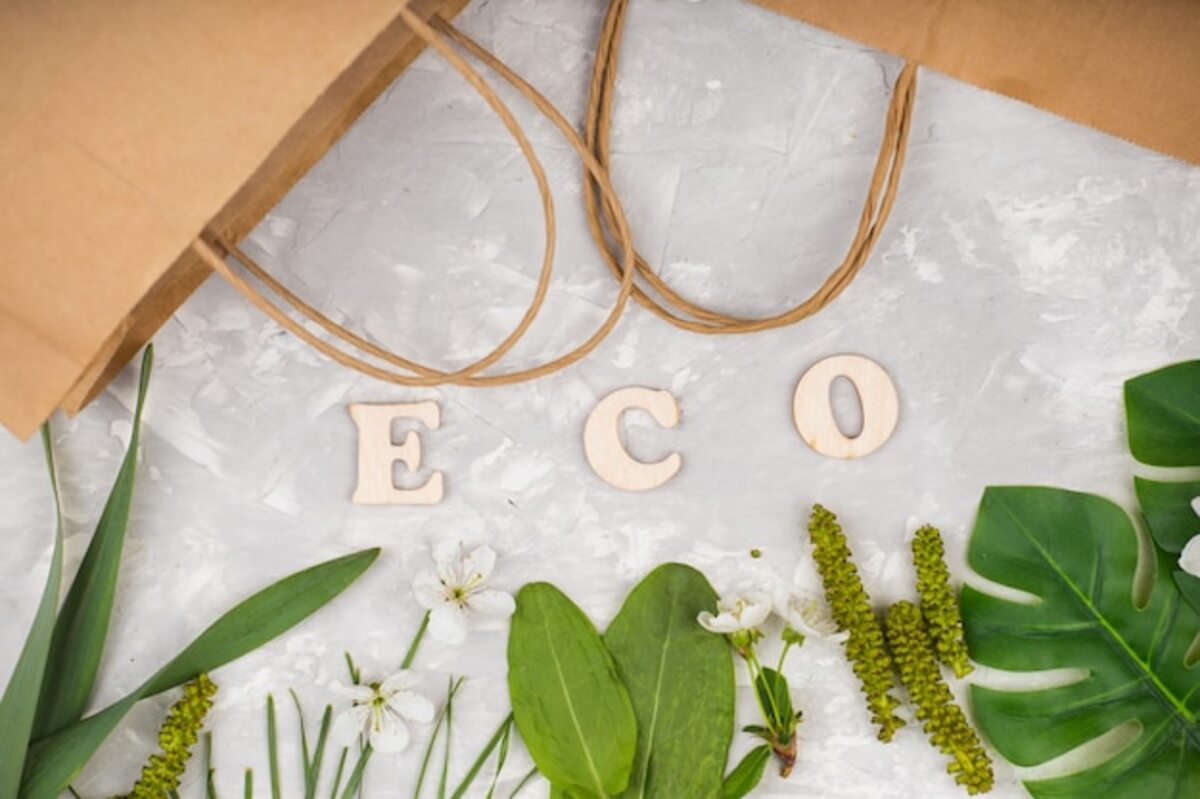Mistakes when not considering the environmental impact in your purchases.

When making your purchases, it is crucial to consider the environmental impact of your decisions. Ignoring this aspect not only harms the planet but can also affect your wallet and your health. In this article, we will explore the most common mistakes we make by not taking the environment into account in our acquisitions. By understanding these critical points, you will be able to make smarter and more sustainable choices that will benefit both your home and our natural surroundings.
Lack of research on the carbon footprint of products
The lack of research on the carbon footprint of the products we purchase is one of the most common mistakes when shopping. Many times, we get carried away by the visual appeal or advertising of the product, without stopping to investigate how it was made and what impact it had on the environment. The carbon footprint not only refers to the emissions generated during production but also to the resources consumed and the transportation until it reaches our hands. Without proper evaluation, we could be inadvertently contributing to the deterioration of the planet with every purchase we make.
Additionally, this lack of knowledge can lead us to choose products that, although they may seem sustainable on the surface, actually have a considerably high environmental impact. For example, some brands may promote their commitment to the environment without providing clear information about their production processes or supply chains. By not researching adequately, we risk supporting unethical practices that affect both the ecosystem and the local communities involved in manufacturing. Awareness of our personal footprint can be a first step toward more informed and responsible decisions in our daily purchases.
2. Ignore the ecological certifications.
By ignoring eco-certifications in your purchases, you are overlooking a valuable tool that helps you make informed and responsible decisions. These certifications, which may include labels such as Energy Star, the LEED standard, or the FSC certificate for wood products, are clear indicators that a product has been evaluated and meets certain environmental criteria. By choosing products with these certifications, you not only support sustainable practices but also minimize the risk of acquiring items that may be harmful to your health or the environment. Ignoring this information can lead you to purchase less safe and less efficient options.
Additionally, ecological certifications are often associated with higher energy efficiency and durability in products. This means that while you may initially feel tempted to opt for a cheaper item without certification, in the long run, you could be spending more money due to higher energy consumption or the need to replace it frequently. Therefore, prioritizing certifications is not only an ethical choice that benefits the planet but also a smart economic strategy for your home. By considering these aspects in your daily purchases, you will actively contribute to the creation of a more sustainable future while protecting your personal investment.
3. Buy disposable products instead of reusable ones.
The use of disposable products has become common in our daily lives, from plastic utensils to food wrappers. Although these items offer convenience and time savings, their environmental impact is significant. By opting for disposable products, we are contributing to the accumulation of waste in landfills and oceans, which not only harms marine wildlife but also pollutes soil and water. Furthermore, many of these products are made from petroleum-derived materials, the production process of which generates harmful emissions for the environment. Therefore, every purchase we make has consequences beyond our home.
The solution lies in the choice of reusable products that can offer a more sustainable alternative. For example, investing in reusable water bottles, cloth bags, and food storage containers not only reduces the amount of waste generated but can also be more cost-effective in the long run. Although the initial investment may seem higher compared to disposable products, the durability and prolonged use offset this initial expense. Adopting more sustainable habits not only helps minimize our environmental impact; it also promotes a conscious and healthy lifestyle that benefits both the individual and the planet as a whole.
4. Do not consider the origin of the materials.
When choosing materials for your home, we often get carried away by aesthetics or price, without stopping to consider where these products come from. Ignoring the origin of materials can have a significant environmental impact. For example, many decorative items or furniture made from wood come from forests that have been logged without sustainable practices, contributing to deforestation and loss of biodiversity. Additionally, some materials may be treated with harmful chemicals that not only affect the environment during their production but can also be released in our home and impact our health.
Choosing local and sustainable products can make a significant difference. By opting for materials that come from responsible and ethical sources, you not only support local economies but also reduce the carbon footprint associated with transportation. Furthermore, many manufacturers are adopting cleaner and more environmentally conscious processes, which means you can find attractive and safe options for you and your family. The next time you shop for your home, take a moment to research the origin of the materials; this choice is key to fostering a more sustainable and healthy lifestyle.
5. Confusing 'biodegradable' with 'sustainable'
When talking about "biodegradable" and "sustainable" products, many people tend to think that they are interchangeable terms, but this is not correct. A biodegradable product can decompose in the environment, but that does not imply that its production or use has been sustainable. For example, an item made of biodegradable plastics may still involve a high consumption of natural resources and energy during its manufacturing. Thus, the confusion between these two terms can lead consumers to mistakenly believe that they are making an environmentally responsible choice when they are actually just choosing a less harmful option.
It is essential to understand that sustainability goes beyond a product's ability to decompose. It involves a comprehensive assessment of the product's life cycle: from the extraction of raw materials to production, distribution, and final disposal. Choosing truly sustainable products means selecting those made with responsible practices that minimize harm to the environment and promote social justice. By educating yourself about these differences, you can make more informed decisions and effectively contribute to a healthier future for our planet.
6. Overlooking excessive packaging
Excessive packaging is one of the most common mistakes made when shopping, and it often goes unnoticed. Many times, products come surrounded by multiple layers of plastic, cardboard, or bubble wrap, which not only generates a large amount of waste but also increases the cost of the final product. This type of packaging not only contributes to environmental pollution but can also be harmful to health if it contains harmful chemicals. By choosing products with minimalist or biodegradable packaging, you are not only making a more sustainable choice but can also save money and contribute to a healthier environment. Furthermore, the visual impact of excessive packaging can lead to a misperception of the product's value. Often, flashy packaging is associated with superior quality when in reality, what matters is sustainability and functionality. Opting for brands that prioritize responsible material use and minimize unnecessary packaging can result in more conscious choices that are beneficial for the environment. In this sense, educating yourself about companies' practices regarding their packaging will allow you to make informed decisions aligned with your environmental values. By doing so, you promote positive change in the industry toward more responsible and less polluting alternatives.
7. Not prioritizing local and sustainable brands
Choosing local and sustainable brands is essential to reduce our environmental footprint. Often, we opt for large corporations that, while they may offer attractive prices, do not always prioritize eco-friendly practices or the well-being of communities. By ignoring local and sustainable options, we miss the opportunity to support producers who implement responsible and ethical methods in their processes. These brands typically have a lower impact in terms of transportation, resulting in reduced carbon emissions and a more robust economy for our community.
By choosing products from local and sustainable brands, we are promoting a more conscious and healthy consumption cycle. Many conventional products contain harmful chemicals that can affect both our home and our health. In contrast, brands committed to sustainability often use natural ingredients and less harmful processes. By prioritizing these alternatives, we are not only taking care of the environment but also fostering a healthier lifestyle for ourselves and our families. Recognizing the importance of our choices is a fundamental step towards a more sustainable future.
8. Forget the product life cycle before buying
One of the most common mistakes when making a purchase is forgetting to consider the product's life cycle. This concept encompasses all the stages that an item goes through, from its production to its final disposal. When acquiring a product, many people focus only on its appearance or immediate functionality, without thinking about how it was made, what natural resources were used, and what the consequences will be at the end of its use. Ignoring these phases can lead to the choice of items that not only negatively impact the environment during their manufacturing and transportation but can also generate waste that is difficult to recycle or decompose.
Making informed decisions about the life cycle of a product will allow you to choose more sustainable options. For example, by selecting products made from recycled materials or those designed to last longer, you contribute to reducing the demand for new resources and minimizing waste generation. Furthermore, this can lead to long-term economic savings, as investing in durable and efficient items will help you avoid recurring expenses from frequent replacements. Ultimately, being mindful of the product life cycle not only benefits the planet; it is also a smart strategy for managing your personal finances.



